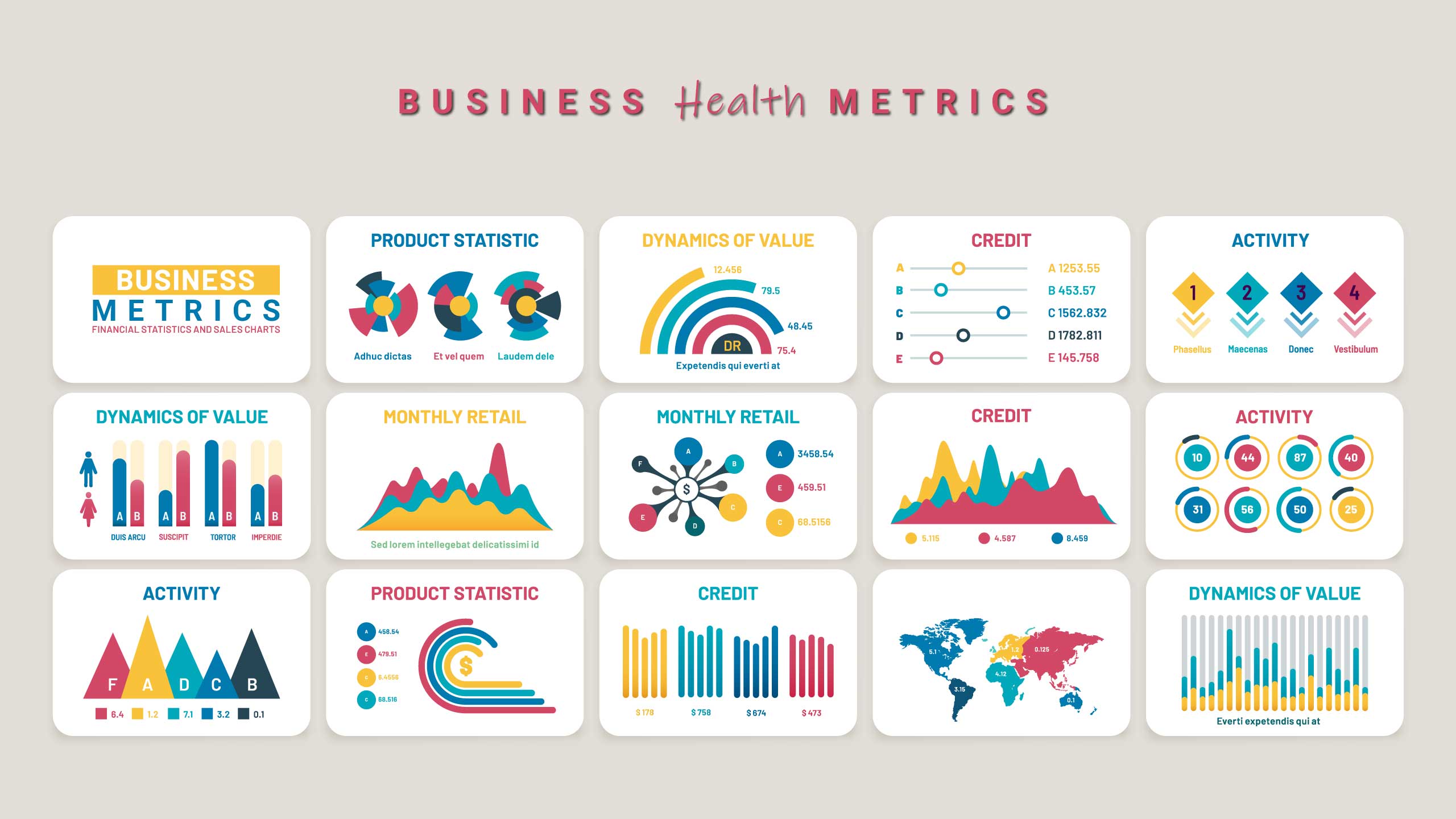Metrics provide a clear and objective view of the business’s performance. By measuring various aspects of the business, owners can identify areas where the business is performing well and areas where it needs improvement.
Metrics that can provide insight into the health and resilience of a small business:
- Revenue growth rate: This is the percentage increase or decrease in revenue over a given period of time, and it’s an important indicator of business performance.
- Gross profit margin: This measures how much money a business earns after deducting the cost of goods sold, and it can help determine if the business is pricing its products or services appropriately.
- Net profit margin: This measures the profitability of the business after all expenses, including taxes, have been deducted.
- Cash flow: This measures how much cash is coming in and going out of the business, and it’s important to ensure that there is enough cash to cover expenses and investments.
- Customer acquisition cost: This measures how much it costs to acquire a new customer, and it’s important to ensure that this cost is not higher than the revenue generated by that customer.
- Customer retention rate: This measures how many customers return to the business, and it’s important to ensure that customers are satisfied and happy with the business.
- Average order value: This measures the average amount of money that customers spend per transaction, and it’s important to track this to see if customers are increasing their spending over time.
- Website traffic: This measures the number of people who visit the business’s website, and it’s important to track this to see if the business is gaining visibility and attracting potential customers.
- Social media engagement: This measures the level of engagement that the business’s social media posts receive, and it’s important to track this to see if the business is effectively communicating with its audience.
- Employee turnover rate: This measures the percentage of employees who leave the business over a given period of time, and it’s important to ensure that employees are satisfied and motivated to stay with the business.
- Inventory turnover rate: This measures how quickly the business is selling its inventory, and it’s important to ensure that inventory is not sitting idle and tying up cash.
- Debt-to-equity ratio: This measures the level of debt that the business has in relation to its equity, and it’s important to ensure that the business is not over-leveraged.
- Return on investment: This measures the return that the business is generating on its investments, and it’s important to ensure that the business is making wise investments that generate a positive return.
- Break-even point: This measures the amount of revenue that the business needs to generate in order to cover its fixed and variable costs, and it’s important to ensure that the business is operating above its break-even point.
- Customer lifetime value: This measures the total revenue that a customer is expected to generate over their lifetime with the business, and it’s important to track this to ensure that the business is attracting and retaining valuable customers.
- Net promoter score: This measures the level of customer satisfaction and loyalty, and it’s important to track this to ensure that the business is providing a positive customer experience.
- Employee satisfaction score: This measures the level of employee satisfaction and engagement, and it’s important to track this to ensure that employees are motivated and productive.
- Vendor performance score: This measures the level of performance of the business’s vendors and suppliers, and it’s important to track this to ensure that the business is working with reliable and efficient partners.
- Quality control metrics: These measure the level of quality of the business’s products or services, and it’s important to track these to ensure that the business is meeting customer expectations and delivering a high-quality experience.
- Competitive benchmarking: This measures the business’s performance compared to its competitors, and it’s important to track this to ensure that the business is staying competitive and making strategic decisions to stay ahead in the market.
- Return on Assets (ROA): This measures how efficiently the business is using its assets to generate profit. It is calculated as net income divided by total assets.
- Debt-to-Asset Ratio: This measures the amount of a business’s assets that are financed by debt. It is calculated as total debt divided by total assets.
- Quick Ratio: This measures a business’s ability to meet short-term financial obligations without relying on inventory. It is calculated as current assets minus inventory divided by current liabilities.
- Burn rate: This measures how quickly the business is spending its cash reserves. It is important to track this metric to ensure that the business has enough cash to fund its operations.
- Sales per employee: This measures the revenue generated per employee, and it’s important to track this to ensure that the business is operating efficiently.
- Customer satisfaction score: This measures the level of satisfaction that customers have with the business’s products or services. It’s important to track this to ensure that the business is meeting customer needs and expectations.
- Marketing ROI: This measures the return on investment of the business’s marketing efforts. It’s important to track this to ensure that marketing efforts are generating a positive return.
- Employee productivity: This measures the amount of output generated by employees, and it’s important to track this to ensure that the business is operating efficiently.
- Time-to-market: This measures the time it takes for the business to bring a new product or service to market. It’s important to track this to ensure that the business is able to stay competitive and innovate quickly.
- Customer churn rate: This measures the percentage of customers who stop doing business with the company over a given period of time. It’s important to track this to ensure that the business is retaining its customers and not losing them to competitors.
Overall, tracking these metrics can provide valuable insights into the health and resilience of a small business, helping owners make informed decisions to improve performance and achieve long-term success.




